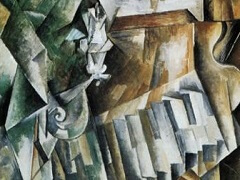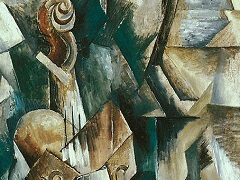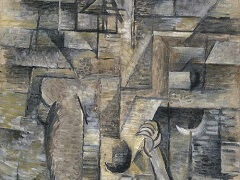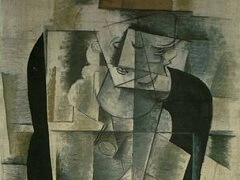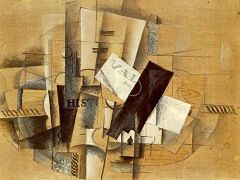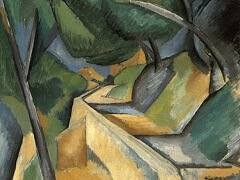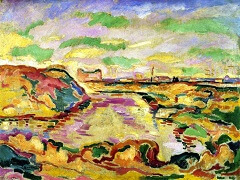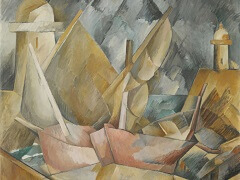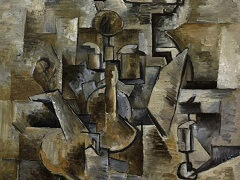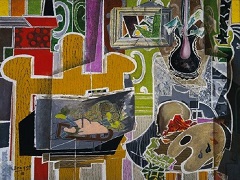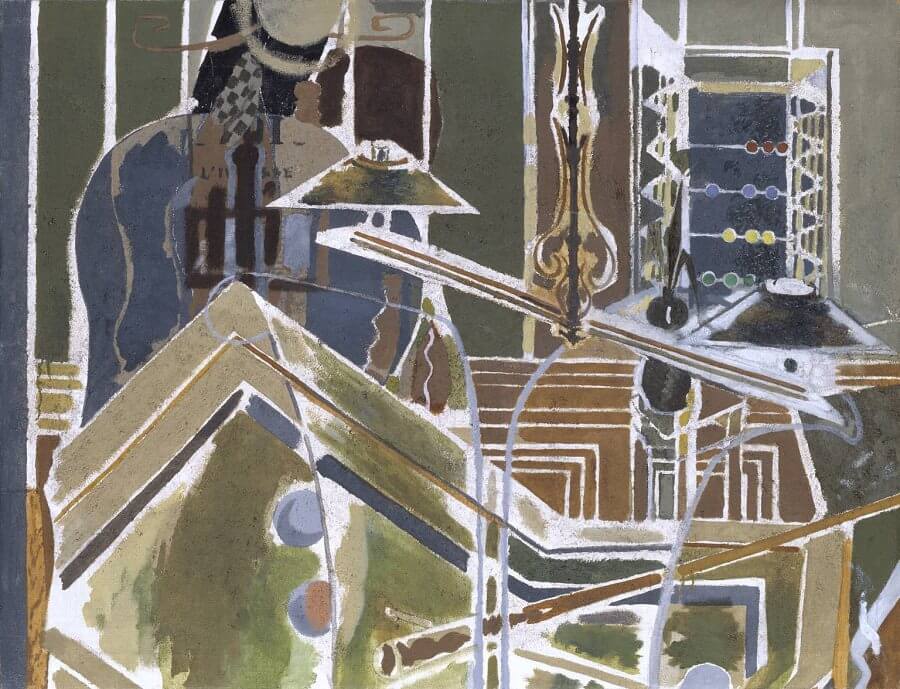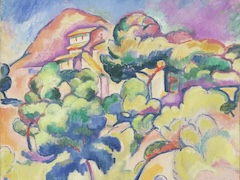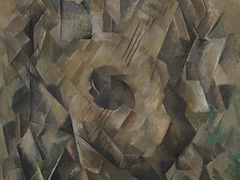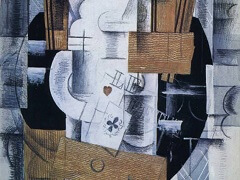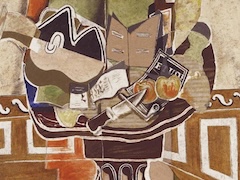The Portuguese, 1911 by Georges Braque
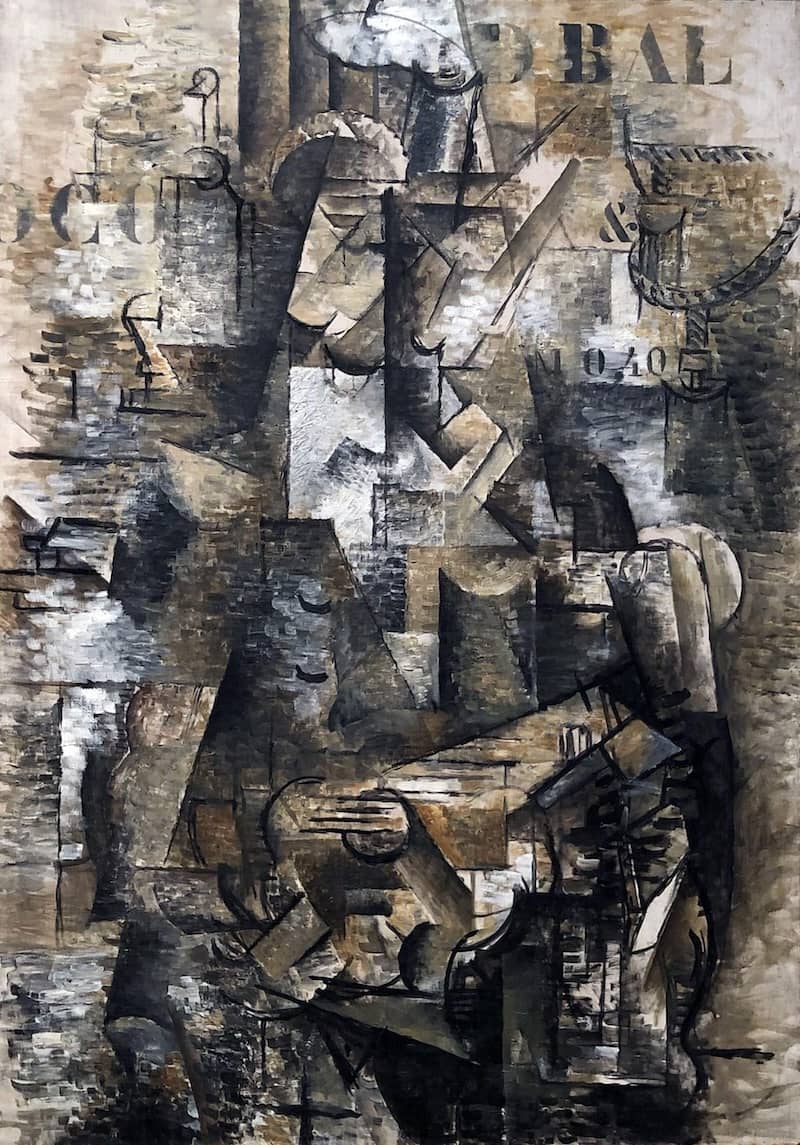
The Portuguese marks an interesting point in the development of Braque's paintings. In the top right hand corner, he stenciled the letters "D BAL" and under them, roman numerals. Although he had included numbers and letters into a still life in 1910, they were a representational element of the painting. In this piece, the letters and numbers are a purely compositional addition. Braque's intentions at adding the letters are many, but mostly they are added to make the viewer aware of the canvas itself. In representational paintings, the canvas is there only as a surface to hold whatever image the painter desires. By adding numbers, out of context elements, and surface textures, the viewer becomes aware of the fact that the canvas can also hold outside elements, making the surface of the painting just as important as what is put on top of it.
Cold Coffee and Analytic Cubism
To understand Cubism it helps to go back to Cézanne's still life paintings or even further, to the Renaissance. Let me use an example that worked nicely in the classroom. I was lecturing, trying to untangle Cubism while
drinking incresingly cold coffee from a paper cup. I set the cup on the desk in the front of the room and said, "If I were a Renaissance artist in mid-15th century Italy painting that cup on that table, I would position myself
at particular point in space and construct the surrounding objects and space frozen in that spot and from that single perspective. On the other hand, if this was the late 19th century and I was
Cézanne, I might allow myself to open this view up quite a bit. Perhaps I would focus on, and record, the perceptual changes of shape and line that result when I shift my weight from
one leg to the other or when I lean in toward the cup to get a closer look. I might even allow myself to render slightly around the far side of the paper cup since, as Cézanne, I am interested in vision and memory working
together. Finally, if I were Braque or Picasso in the early 20th century, I would want to express even more on the canvas. I would not be satisfied with the limiting conventions of
Renaissance perspective nor even with the initial explorations of the master Cezanne.
As a Cubist, I want to express my total visual understanding of the paper coffee cup. I want more than the Renaissance painter or even Cézanne, I want to express the entire cup simultaneously on the static surface of the
canvas since I can hold all that visual information in my memory. I want to render the cup's front, its sides, its back, and its inner walls, its bottom from both inside and out, and I want to do this on a flat canvas. How can
this be done? The answer is provided by The Portuguese. In this canvas, everything was fractured. The guitar player and the dock was just so many pieces of broken form, almost broken glass. By breaking these objects
into smaller elements, Braque and Picasso are able to overcome the unified singularity of an object and instead transform it into an object of vision. At this point the class began to look a little confused, so I turned back
to the paper cup and began to tear it into pieces (I had finished the coffee). If I want to be able to show you both the back and front and inside and outside simultaneously, I can fragment the object. Basically, this is the
strategy of the Cubists.


